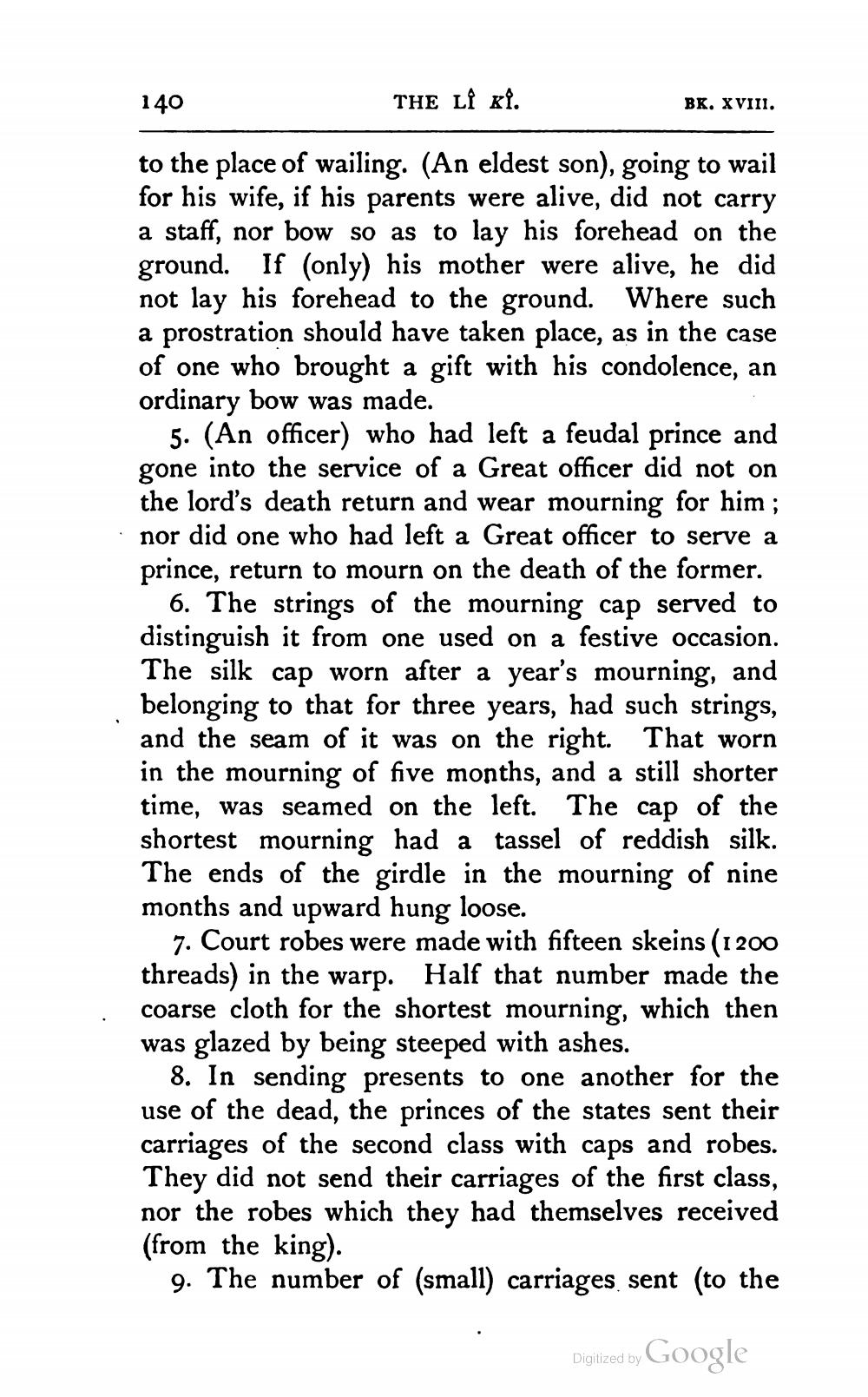________________
140
THE LÎ ki.
BK. XVIII.
to the place of wailing. (An eldest son), going to wail for his wife, if his parents were alive, did not carry a staff, nor bow so as to lay his forehead on the ground. If (only) his mother were alive, he did not lay his forehead to the ground. Where such a prostration should have taken place, as in the case of one who brought a gift with his condolence, an ordinary bow was made.
5. (An officer) who had left a feudal prince and gone into the service of a Great officer did not on the lord's death return and wear mourning for him ; nor did one who had left a Great officer to serve a prince, return to mourn on the death of the former.
6. The strings of the mourning cap served to distinguish it from one used on a festive occasion. The silk cap worn after a year's mourning, and belonging to that for three years, had such strings, and the seam of it was on the right. That worn in the mourning of five months, and a still shorter time, was seamed on the left. The cap of the shortest mourning had a tassel of reddish silk. The ends of the girdle in the mourning of nine months and upward hung loose.
7. Court robes were made with fifteen skeins (1200 threads) in the warp. Half that number made the coarse cloth for the shortest mourning, which then was glazed by being steeped with ashes.
8. In sending presents to one another for the use of the dead, the princes of the states sent their carriages of the second class with caps and robes. They did not send their carriages of the first class, nor the robes which they had themselves received (from the king).
9. The number of (small) carriages, sent (to the
Digitized by Google




